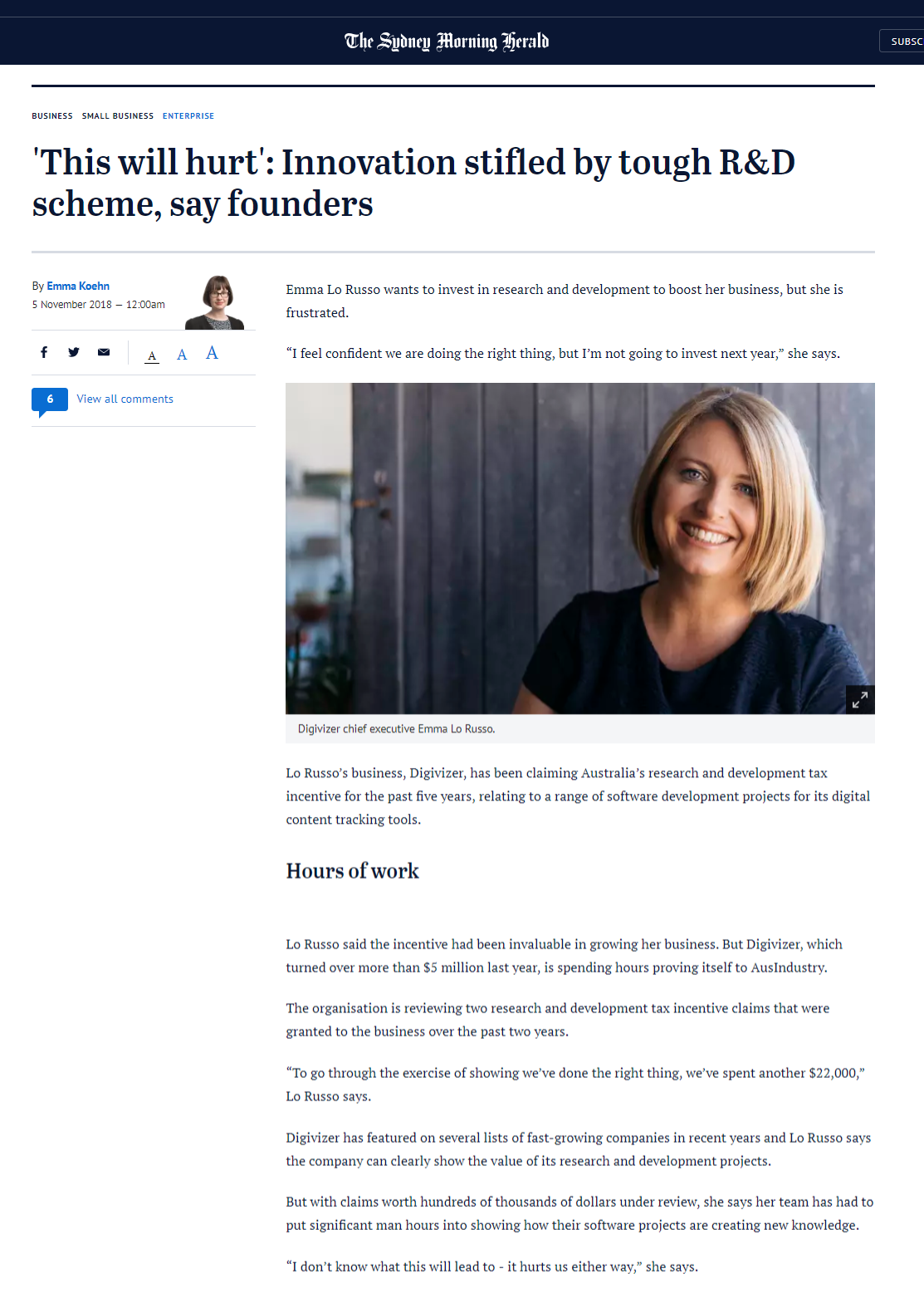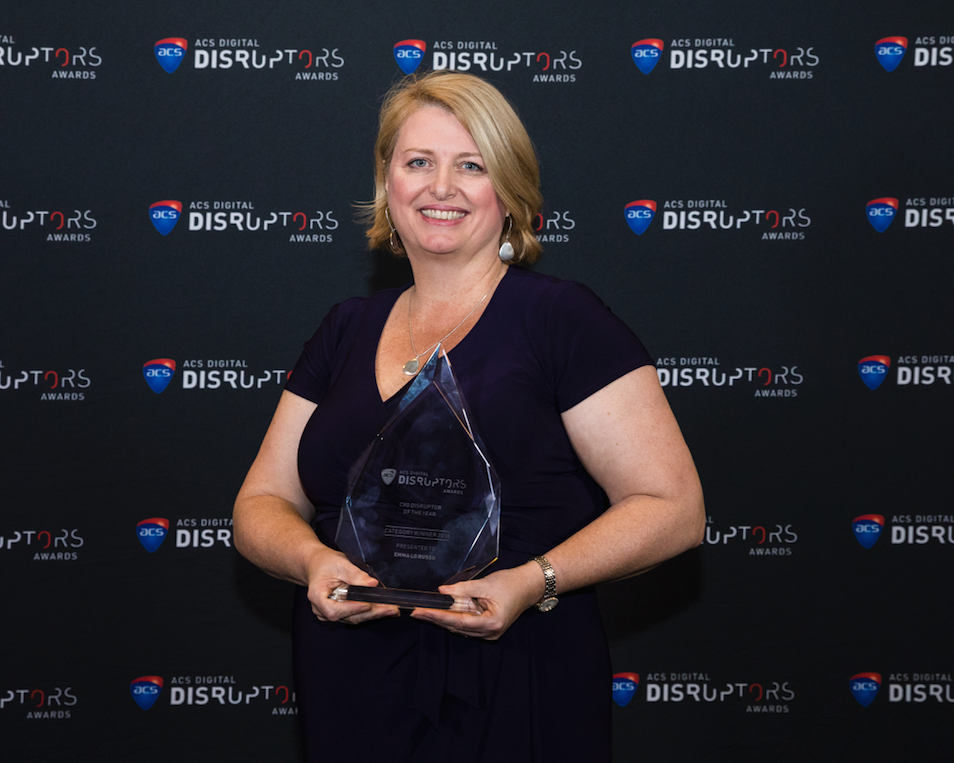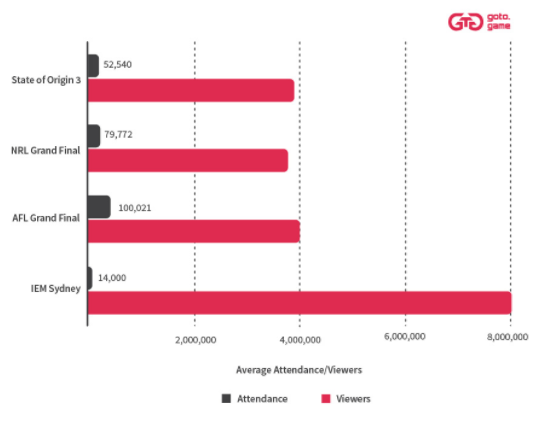
In light of International Women’s Day, I went searching for inspiration by considering how to find the voice and other examples that represent how we at Digivizer think about people, equality and the future workforce, in amongst the thousands of articles arguing against gender inequality.
There seemed to be a consistent angle the majority of articles were taking. Too many communicate disempowerment, and often reinforce the position that being female would dictate their potential success for the rest of their life. Whilst our lack of progress on all scorecard measures is troubling, we must never allow women to feel that fighting against gender inequality was futile.
“Gender Inequality plagues the business world. Men dominate the executive ranks, and as such women face disproportionate challenges in their efforts to rise to the top…women are egregiously under-represented when compared to men…Misogyny has been knowingly built into corporate structures ran by men, and these influences and beliefs create systems that disadvantage women and prevent them to move forward.”
The author in this article (like many articles published in light of International Women’s Day), in 100 words or less, successfully affirmed her next 1000 words would be detailing how women are victims within the workplace, how our gender prevents us from achieving what’s in our capacity, and how the only people that both victimise and prevent us, are men.
Like so many others, this article seemed to focus too much on what women supposedly can’t do, rather then what they can do- and what they are doing already. Like all societal change, we need to celebrate those who are breaking through, breaking new ground, leading by example and proving gender plays no limiting role.
So this posed the question: Do women really look at their gender as a preventative? Do they view their sex as the only barrier between themselves and success? Are men really what stops us from getting what we want? And are we currently arguing for gender parity the right way?
So taking this idea we asked some of the women who power Digivizer, to answer 4 questions. And these were are our collective answers:

Sanjita Shah (Senior Software Engineer)
What have you done in your life that you are most proud of? I am one of a group of people who have been instrumental in the building, staffing, and running of a school in a small village in Gujarat, India. There was no school in the village and for safety reasons, girls were not allowed to travel to other schools as they were too far away. The school has been running for 18 years now. Children educated in the school have gone on to become doctors, engineers, and teachers.
Who in your life inspires/inspired you the most? My mother. She grew up in a rural Indian village and did not have the opportunity to study. She made up for this lack of education later in life by studying continuously after she got married, and initiated many projects. These included starting the above school, eye camps, cattle shelter, health centers and support for poor families in rural Gujarat.
If you had an opportunity to really get a message through to a large number of people, what would that message be? Always be learning. No matter what age.
And what do you think inhibits or prevents you from telling that message the most? I encourage my friends and family, but don’t have the credentials to pass the message to a wider audience.

Sarah Purvis (Digital Marketing Analyst)
What have you done in your life that you are most proud of? Doing what I’m passionate about! Working my butt off during high school to get into my degree has been totally worth it. Studying also brought me to Digivizer. Digivizer has taught me so much about myself and my work ethic!
Who in your life inspires/inspired you the most? A podcast I listen to, No Such Thing as a Fish, constantly inspires me to explore the world and keep learning. When I listen to each week’s podcast, I’m constantly awed at the breadth of information delivered in an entertaining manner. It inspires me to constantly explore the depth and history surrounding the things I do, and to question everything around me.
If you had an opportunity to really get a message through to a large number of people, what would that message be? Something I’m really passionate about is representation within the legal system, and the equitable division of power across peoples. There has never been ethnic representation on influential judicial benches and this is something that needs to change in order for other elements of justice to change – namely the nature of police discretion and the overrepresentation of ethnic populations in incarceration.
And what do you think inhibits or prevents you from telling that message the most? The lack of awareness surrounding these issues, and the lengthy time it takes to change these elements. There is a lack of data around this area – the information collated doesn’t acutely reflect the ways that Government policies could be changed through looking from a different lens. What I hope to achieve in combating these issues is spread this message of justice through using the data to support and prove the need for accurate representation of every person within the legal system.

Caitlin Stonehouse (Senior Communications & Content Manager)
What have you done in your life that you are most proud of? While it’s been cool to have some big achievements in work and life along the way (including amassing a fabulous earring collection), what I’ve been most proud of is that I’ve been true to me and who I am, and I’ve had a lot of fun doing it.
Who in your life inspires/inspired you the most? I’m incredibly lucky to be surrounded by awesome people who give me mojo every day. My biggest inspirations would be my Mum, my sister, my niece – three generations of brilliant women who continually teach me things – and my best friend. Without their support, encouragement and sometimes tough love, I wouldn’t be where I am today.
If you had an opportunity to really get a message through to a large number of people, what would that message be? Some version of ‘You do you’. There can be so much pressure to be a certain way or to believe a certain thing, but if it doesn’t gel with who you are, you don’t have to take it on board.
And what do you think inhibits or prevents you from telling that message the most? Maybe having a private Instagram account?

Madeleine Soden (Digital Creative)
What have you done in your life that you are most proud of? Completing my university degree and smoothly transitioning into an industry job has been my proudest achievement. I’m grateful I landed a job at Digivizer, and, whilst it has been challenging, my confidence, personal development and professional skills have flourished. I also travelled alone to Africa, Europe and USA in my gap year: I developed self-reliance, assurance, overcame my fears and learnt so much! I am most proud when I feel I am developing and growing.
Who in your life inspires/inspired you the most? My mum is my best friend, my rock and the most inspirational person in my life. Her kind and genuine selflessness has taught me the importance of treating everyone with respect and compassion.
If you had an opportunity to really get a message through to a large number of people, what would that message be? People often have colossal plans to change the world, to help everyone and fix everything. However, I think that looking after those closest to you is second to none in the pursuit for a healthier community. Consequently, if everyone worked within their communities there would be a ripple effect around our large social climates, and everyone would be looked after.
And what do you think inhibits or prevents you from telling that message the most? My fear of being rejected as well as not having the confidence to speak up inhibits me from expressing my opinions. I need to learn to embrace these vulnerabilities in order to help my own communities.

Jess Millo (Executive Assistant to the CEO)
What have you done in your life that you are most proud of? Writing and recording two albums with my band is something I am most proud of.
Who in your life inspires/inspired you the most? My dad Mario inspires me with the amazing orchestral music he writes and my writing partner Kitch inspires me when we are writing, singing and performing together.
If you had an opportunity to really get a message through to a large number of people, what would that message be? Avoid buying products that contain Palm Oil (aka Sodium Laureth Sulphate). With the rate of deforestation in Borneo due to palm oil plantations, the Orangutans (along with many other animals) are on the brink of extinction because they will have no jungle left to live in.
And what do you think inhibits or prevents you from telling that message the most? I talk about it with people I know. Although I don’t have the audience to spread the word globally, there are plenty of companies taking action now to help. Every time I choose a product without palm oil it’s helping the cause.

Anastasia Tighe (Head of Creative Production)
What have you done in your life that you are most proud of? Moving to New York at the beginning of my career. It was out of my comfort zone and it forced me do things on my own as I no longer had my support system around me. I learnt I could achieve anything on my own and that having limited resources shouldn’t stop you from achieving goals as long as those resources are used wisely.
Who in your life inspires/inspired you the most? I have a ridiculously talented mother who has a work ethic to boot. She has taught me that simply being talented or simply working hard won’t be enough to be successful at work, and that it’s harnessing both effectively that will allow you to reap the most rewards.
If you had an opportunity to really get a message through to a large number of people, what would that message be? Wear Sunscreen.
And what do you think inhibits or prevents you from telling that message the most? I’d need to come up with something more creative than Baz Luhrmann’s 1997 Everybody’s Free (To Wear Sunscreen), so I probably just need to block out the time more than anything else.

Chantelle Zhang (Web Developer)
What have you done in your life that you are most proud of? I decided to change my career and completed the relative course in my maternity leave. It was difficult as I had to balance taking care of a new born baby and study (and never have enough sleep!), but I survived it.
Who in your life inspires/inspired you the most? My Grandma, she is a courageous and wise women who achieved a lot in an age where women were discriminated and treated badly in China. She taught me that a women should be independent, courageous and responsible for her life, and to never rely on parents or her husband.
If you had an opportunity to really get a message through to a large number of people, what would that message be? Live to the most of your life, it’s never too late to do anything.
And what do you think inhibits or prevents you from telling that message the most? Haven’t had the right chance.

Stephanie Seebacher (Content & Community Specialist)
What have you done in your life that you are most proud of? I think for me it was finishing uni. Both my parents finished high school in year 10 and hadn’t gone on to do further study. I honestly wasn’t the most amazing student at school. So while adding the additional years of study straight after school was super daunting – I managed to finish it and come through with a lot more faith in my own abilities.
Who in your life inspires/inspired you the most? My mum is definitely one person who has always inspired me. She uses her free time to care for others and fully supported, encouraged and nurtured my Christian walk. Her passion is also inspiring. She spent three years of her life volunteering with her football team (South Sydney Rabbitohs) when they got kicked out of the Rugby League competition in the late 90’s. While many might think this wasn’t a revolutionary sacrifice, it taught me that when there is something important to you, it’s worth sacrificing time and committing to.
If you had an opportunity to really get a message through to a large number of people, what would that message be? I think it would be – as humans, we need to be more aware of the implications of the things we do. Whether it’s the words we say or the actions we make towards those around us (both close friends, but particularly strangers). We need to think about the implications of that, of the potential damage you can have on someone else.
And what do you think inhibits or prevents you from telling that message the most? I think as a society – and with social media in particular, we have almost dehumanised others. To the point where there is almost no awareness that there is someone with feelings on the receiving end of the comments and actions that we take. I don’t think that it’s something that one individual can change – its a wider problem. But I think that there are small changes that we can make and be conscious of how we treat people and speak with people.

Lilli Lo Russo (Social Content & Community Associate)
What have you done in your life that you are most proud of? Never being afraid to speak up. I know this sometimes gets me in trouble (well, a lot), but I am proud that I have never refrained from vocalising my thoughts and opinions. Whether it be for a social justice cause or as simple as what I want for dinner, I am proud that I speak up when it matters.
Who in your life inspires/inspired you the most? My little sister, Eliza. She is 15 going on 30, and has achieved more in her little life time then majority of retired adults. Lizey teaches me every day to be unapologetically yourself, and to reach for the stars- because you can achieve anything you put your mind to! (I’d attach everything she has achieved if I could, but surely LinkedIn has a word limit).
If you had an opportunity to really get a message through to a large number of people, what would that message be? There is never a time limit (or quite frankly, any other limit) on learning. Everybody should always keep learning, and nobody should be exempt or prevented from education.
And what do you think inhibits or prevents you from telling that message the most? Nothing really, except I don’t have access right now to a large audience to tell that message. But I do have access to those that I know already, and all big things start small…so I guess that’s where I’ll start!

Brodie Smith (Content & Community Specialist)
What have you done in your life that you are most proud of? In the space of 9 days in 2016, I wrote an 80,000 word fiction novel that has formed the basis of a series I’ve been steadily working on ever since. These days the series stretches over more than a million words, and the first chapter was recently named a finalist in a magazine competition! That’s what I’m most proud of – that I’ve persevered with this project, and not just abandoned it in a drawer, like so many other stories I’ve written over the years.
Who in your life inspires/inspired you the most? I find a lot of inspiration in different people and things every day. Some days I get blown away by the kindness of my friends, and that inspires me to be a little bit kinder. Some days I am inspired by someone in the office having a particularly clever idea, which motivates me to learn and try new things and share my own ideas.
If you had an opportunity to really get a message through to a large number of people, what would that message be? It gets better. And then it gets worse, sometimes. But then it gets better again! And you’ll never know what it’s going to be like tomorrow unless you’re there for it.
And what do you think inhibits or prevents you from telling that message the most? The social imperative to not share the bad things? Everyone wants their lives to look Instagram-perfect and I am definitely not immune to that. It’s hard to share the bad things. I’m currently working on that with family and friends, and there’s no way I’m comfortable sharing stuff like that in public and online. I think we all need to get better at being real online.

Francesca Meliton (Community Engagement Manager)
What have you done in your life that you are most proud of? Buying my dream car (Mazda MX5) and using it in amateur motorsport. I didn’t think it was possible so it was epic making it happen using my own skills and power. I’ll be back at the track this weekend!
Who in your life inspires/inspired you the most? Probably my parents because they didn’t want me to just be academically successful but be successful in anything I choose to do. My dad always told me that you can’t put a price on knowledge.
If you had an opportunity to really get a message through to a large number of people, what would that message be? A simple 3-part message: Don’t let fear hold you back. Make mistakes. Learn.
And what do you think inhibits or prevents you from telling that message the most? I don’t think there’s anything that prevents me from telling that message. It’s something I’ve tried to instill in students I’ve taught or tutored as well as people I’ve trained in my working career. The toughest part being a living example of the message.

Ingrid Stockley (Head of Office & People Operations)
What have you done in your life that you are most proud of? Being a mum.
Who in your life inspires/inspired you the most? My parents. Fiercely independent, hard working people who came to this country with nothing and left an amazing legacy. I miss them both every day.
If you had an opportunity to really get a message through to a large number of people, what would that message be? Be your authentic self always, if people don’t like that version of you, they are not your people.
And what do you think inhibits or prevents you from telling that message the most? Nothing really- however you can’t put experienced heads on young shoulders, it’s something people have to subscribe to or learn along the road of life.

Emma Lo Russo (Chief Executive Officer)
What have you done in your life that you are most proud of? Starting and then growing Digivizer to the size and opportunity it is now. Doing it whilst raising my three amazing kids and enjoying the support from my gorgeous husband has shown that all I wished for could be achieved.
Who in your life inspires/inspired you the most? I do gain great inspiration from what Bill & Melinda Gates have achieved and how they have given back to society. It is very human, very altruistic but also demonstrates how they exercise their great smarts and influence on the world and bring a great element of honesty, sincerity and achievability to an entrepreneur such as myself.
If you had an opportunity to really get a message through to a large number of people, what would that message be? The only person limiting your growth is yourself. If you focus on adding value to as many people as you can whilst simultaneously looking to continuously learn yourself, you will always stay relevant, engaged and fulfilled.
And what do you think inhibits or prevents you from telling that message the most? Like many women, I used to lead by example.. I have since learned if you grow people you grow your business and you grow yourself. So that means taking the time to stop and focus on others.
So after feeling inspired, what did these answers reveal?
- That being a woman has not “prevented them from moving forward” in sharing the messages they felt passionate about.
- They didn’t think as a woman they “faced disproportionate challenges” to achieve what they hoped for in the future.
- That nobody thought as a woman they were “egregiously under-represented when compared to men”.
- Not one answer stated that being a woman prevented them from achieving what they were proud to have already achieved.
The key thing if anything we need to work on is building the confidence to communicate the key passion and key lessons and mandates that will help all women live the passion and life they want to live.
There is no denying these 13 women and their histories are a microcosm of the female experience, however it is clear that reading about the incredible accomplishments and aspirations of these 13 women, inspired me much more than the previous 13 articles I’d read.
We need to change the debate. If we consistently blame the cause of female misrepresentation on men, then we indirectly reinforce that our experience as women is completely in the hands of males, and the ideal of gender unison fades further into the distance.
We are all much more than an underprivileged and under-represented group of females. We are women who are smart, driven and compassionate. We have the ability to cultivate whatever future we want. We are women with impressive resumes, incredible experiences and fierce goals. We are also women who support each other’s individual differences, goals and success.
The Gender debate, needs to move a lot further than a debate on gender. We aren’t dealing with a powerful man and a powerless woman. We’re dealing with two, equally unique and capable genders who are asking to be given the same opportunities as each other. And this is the mentality we should all have whenever fighting against gender inequality.
The Financy Women’s index revealed this morning we are still 12 years away from financial equality. To achieve this it is critical that we instead highlight the great work and examples of women to ensure we expect, ask and obtain to make equality the norm.
Don’t limit the argument to woman vs man, and don’t reinforce sexism by repeating all the reasons why females are apparently inferior.
So no more articles and arguments on all the things women apparently are prevented from doing. Let’s instead celebrate the women who lead, who do fabulous thing and who are changing the world for the better. The more we celebrate the many amazing women, the more we inspire others and the more this becomes the norm.
This article was written as a team collaboration. Thank you to Lilli Lo Russo for leading this project.
This article was also published on LinkedIn




















 Original post seen on
Original post seen on 

 While care is needed with these comparisons – it’s not possible to break out how any people outside Australia watched the Australian sporting codes, nor the proportion of those who watched IEM output based here in Australia – one thing is clear: esports attract greater audiences and a larger number of overseas audiences. This is why we need to advocate early for our new stadiums to support these type of events and digital infrastructure and support required.
While care is needed with these comparisons – it’s not possible to break out how any people outside Australia watched the Australian sporting codes, nor the proportion of those who watched IEM output based here in Australia – one thing is clear: esports attract greater audiences and a larger number of overseas audiences. This is why we need to advocate early for our new stadiums to support these type of events and digital infrastructure and support required.